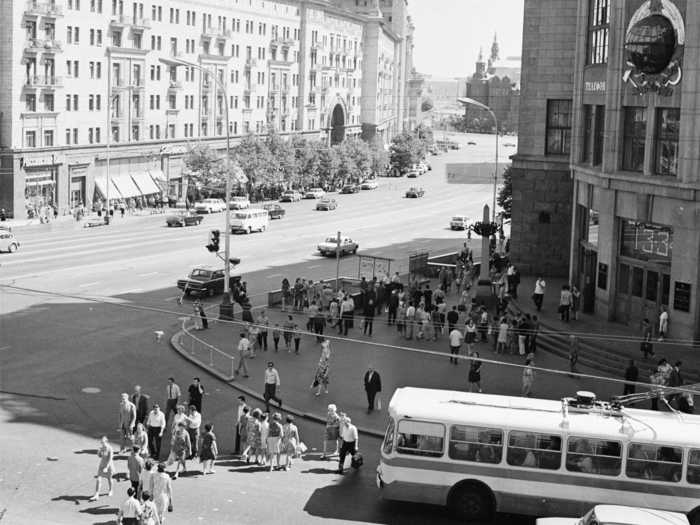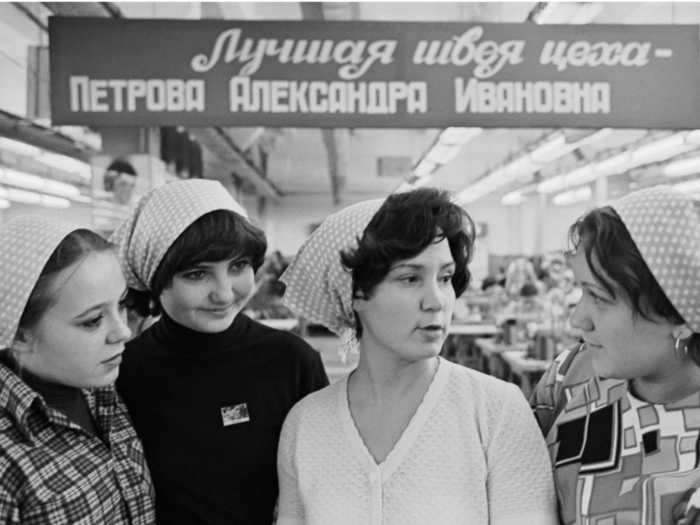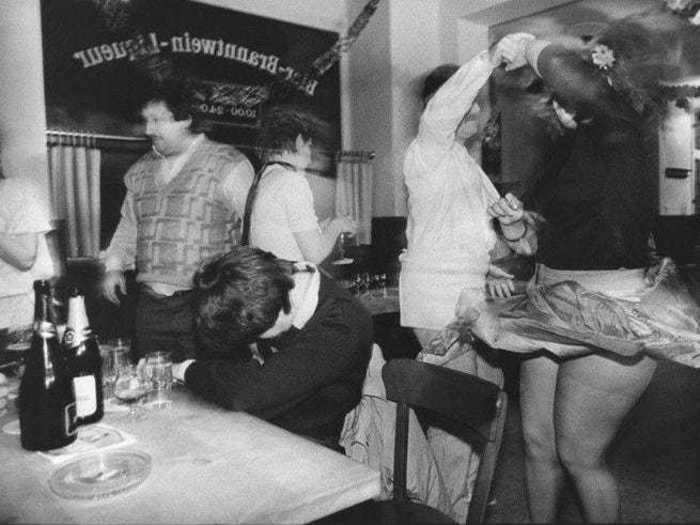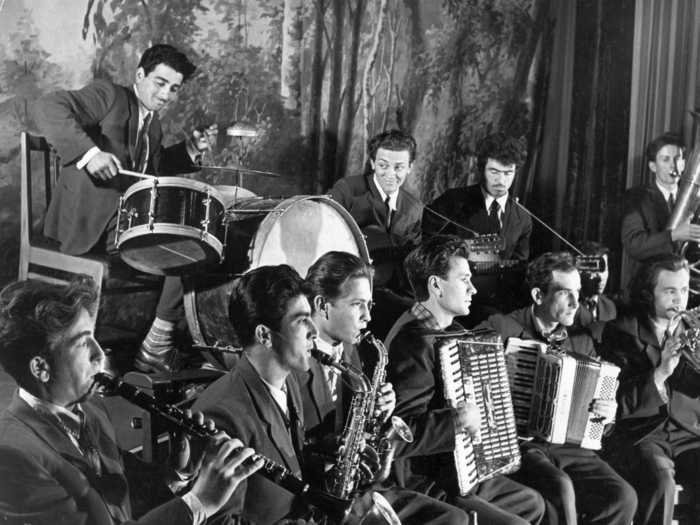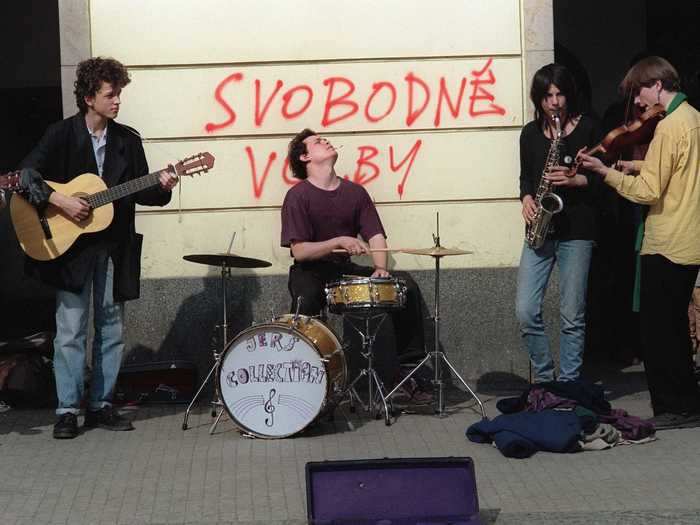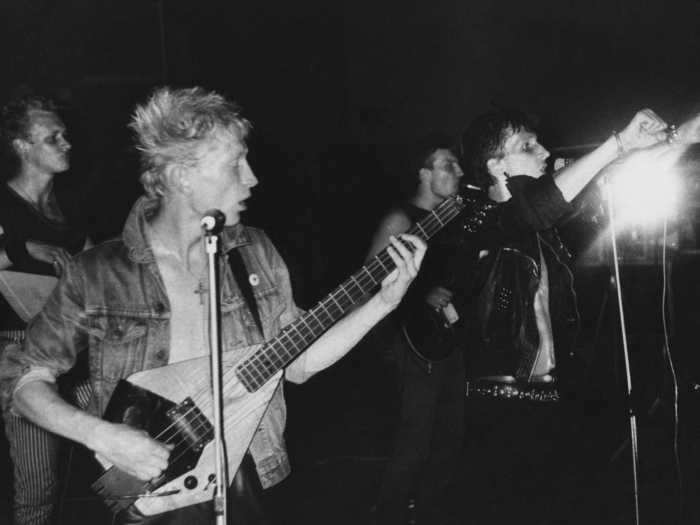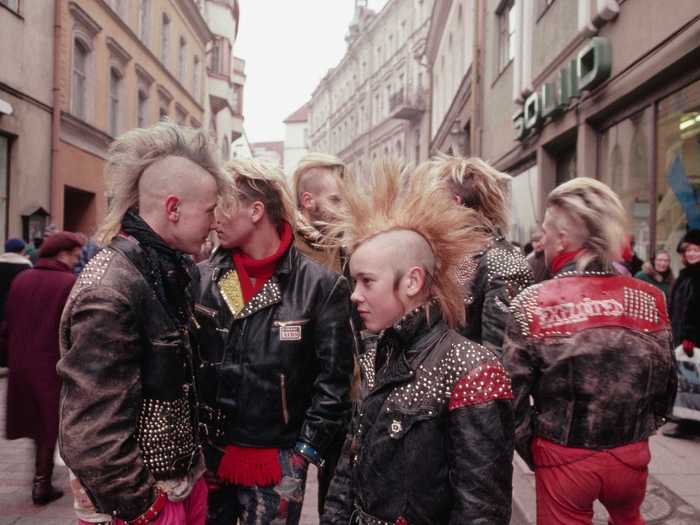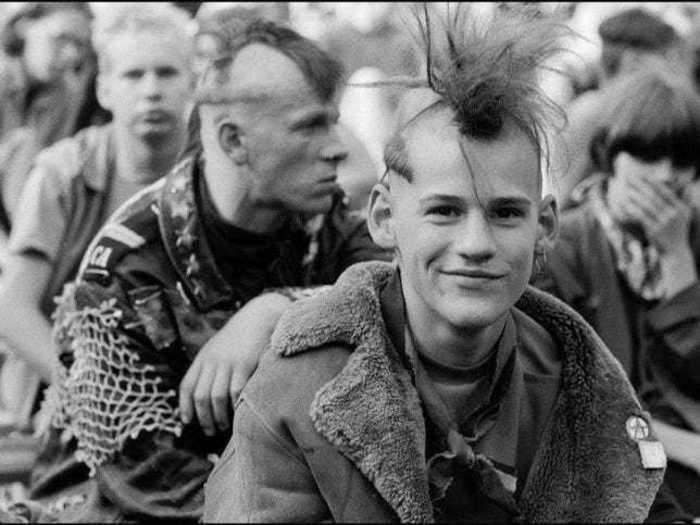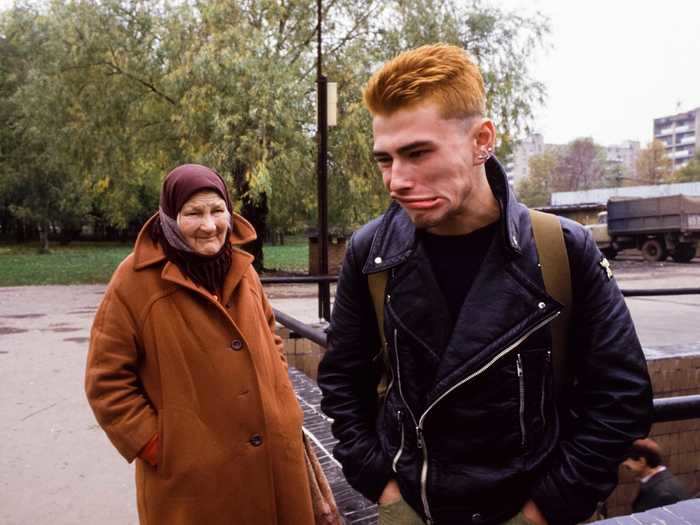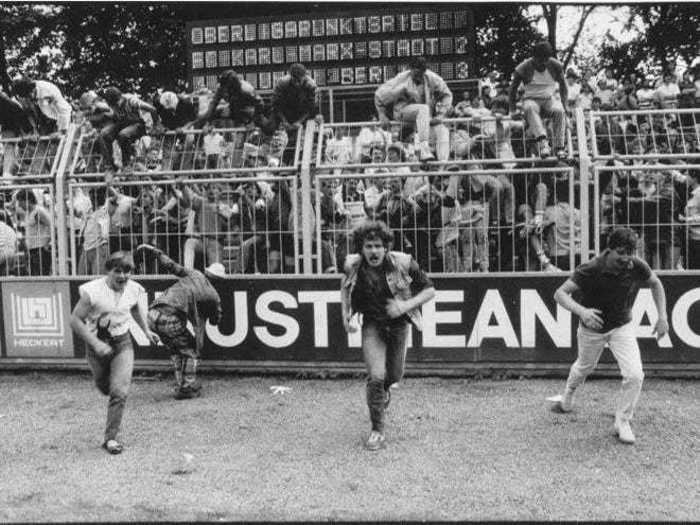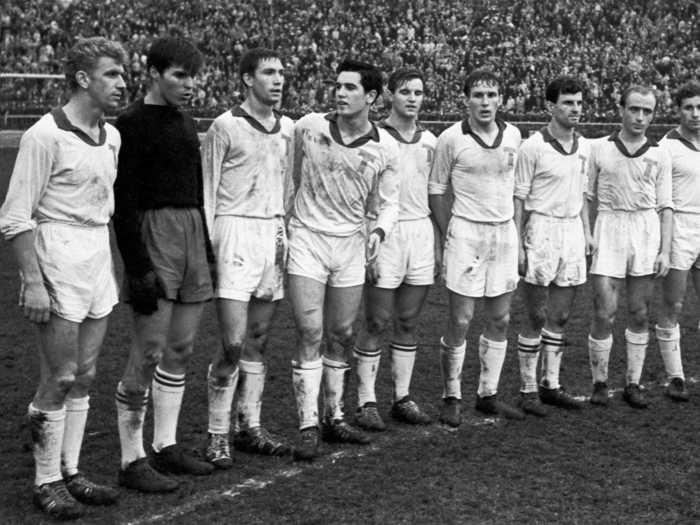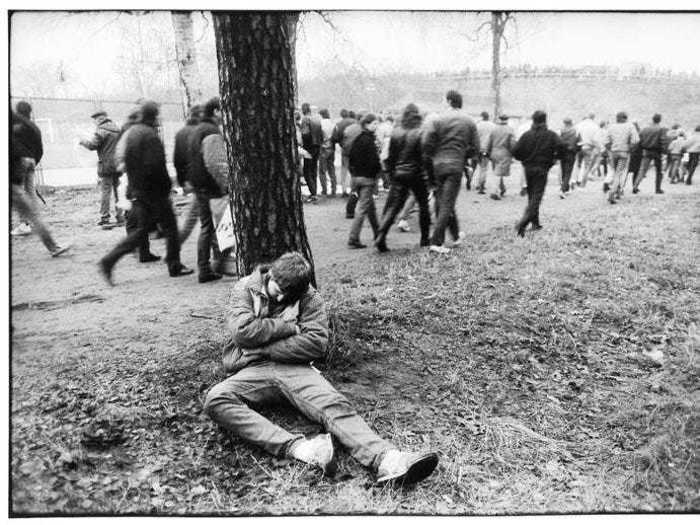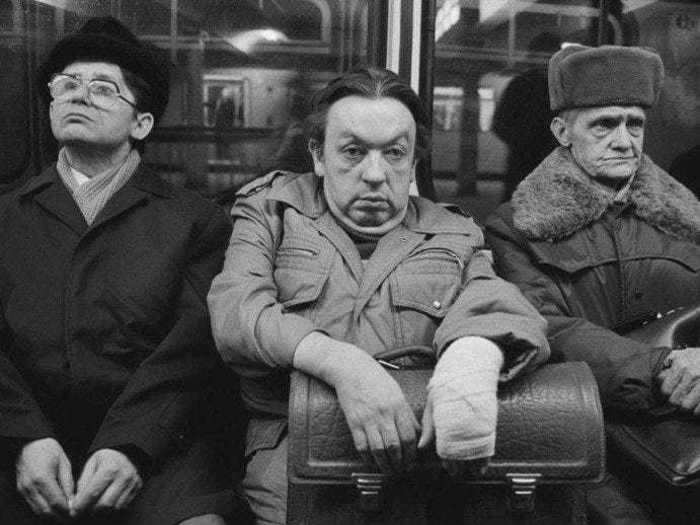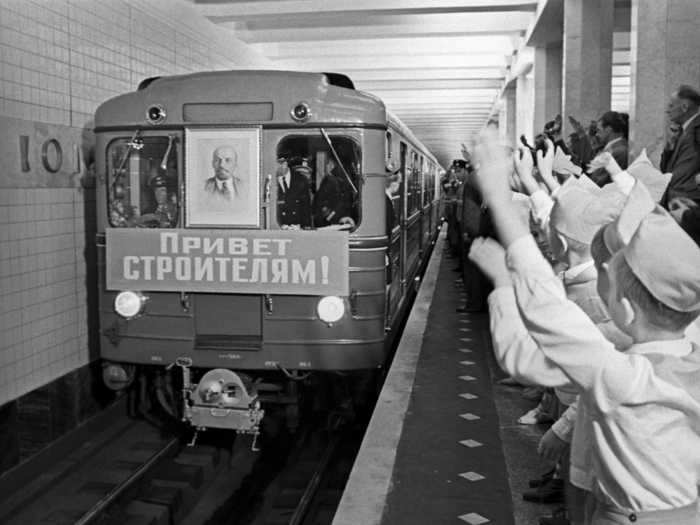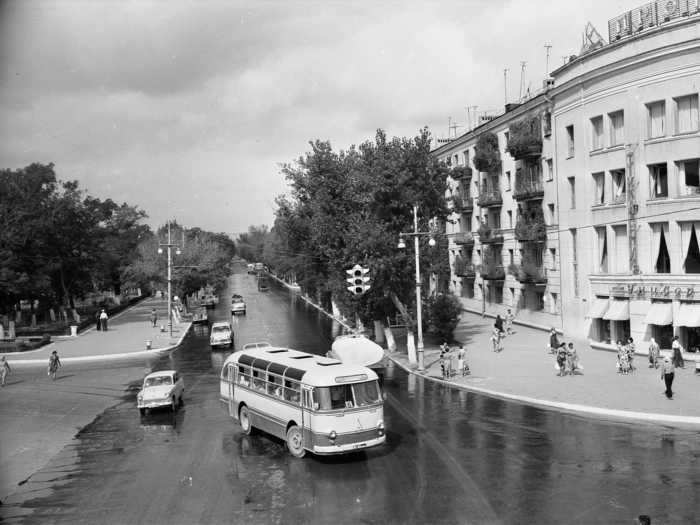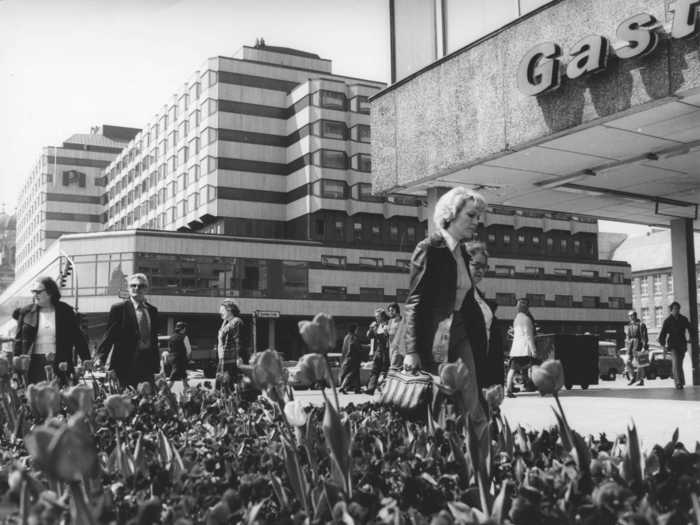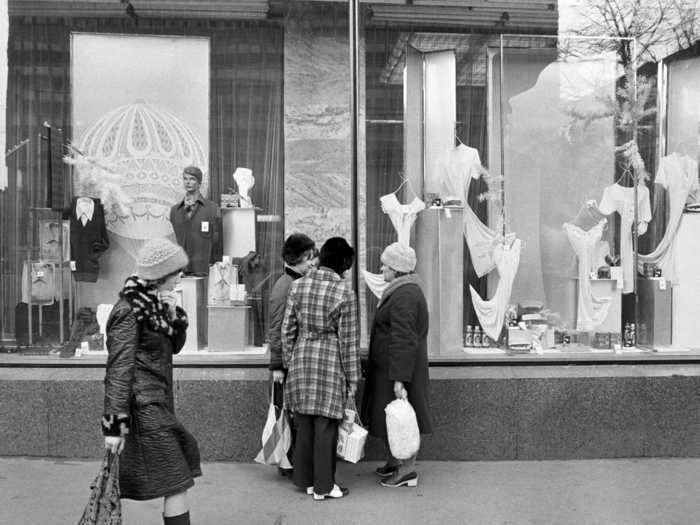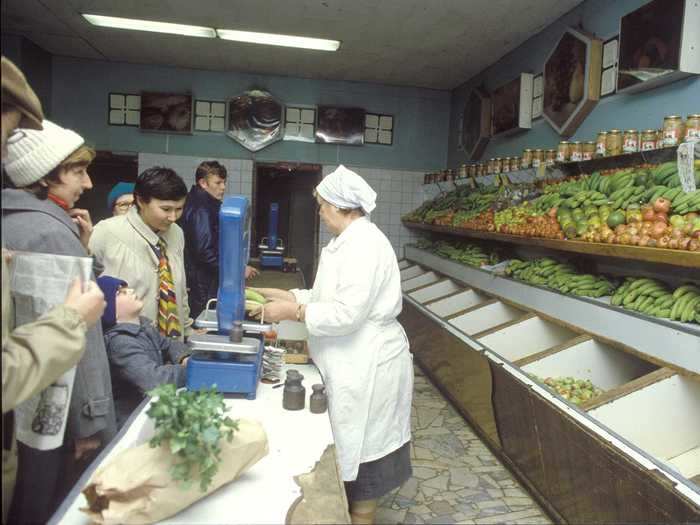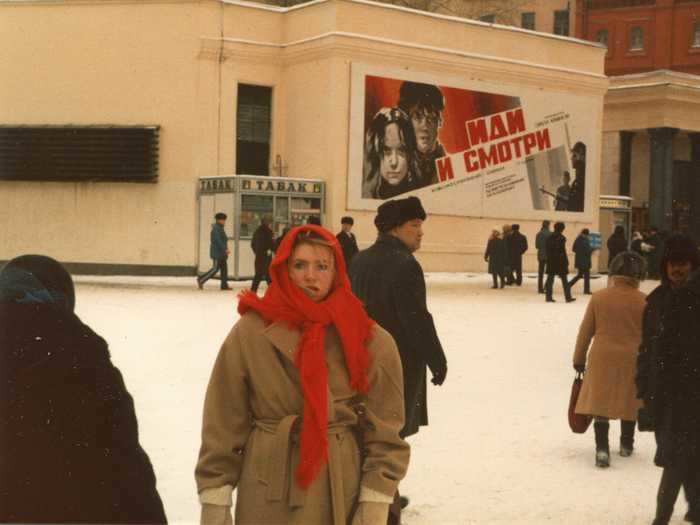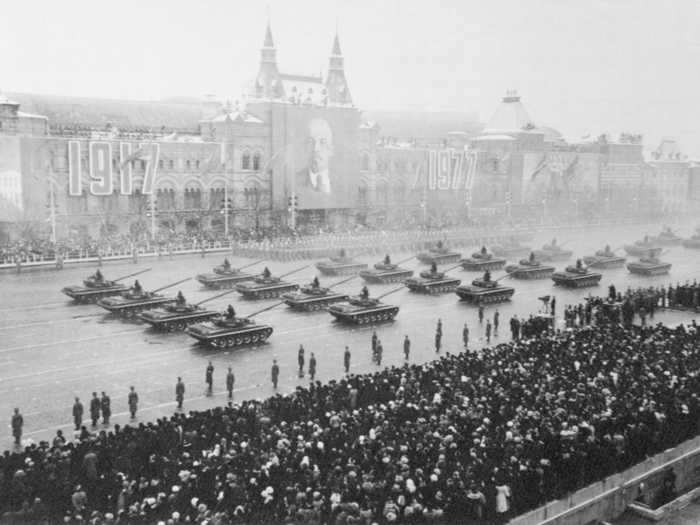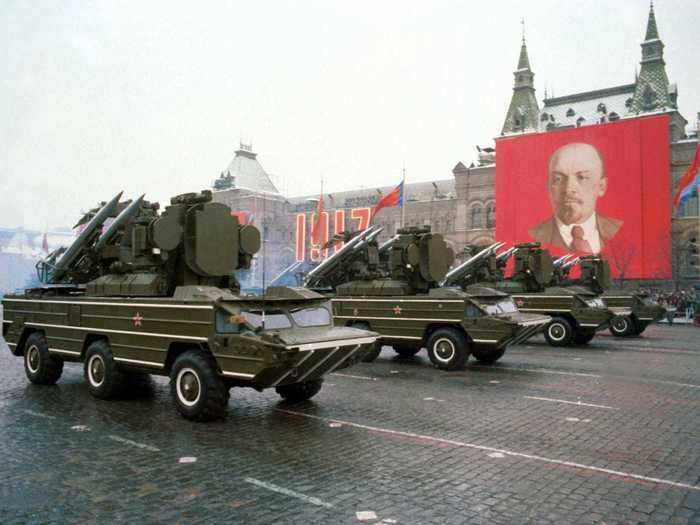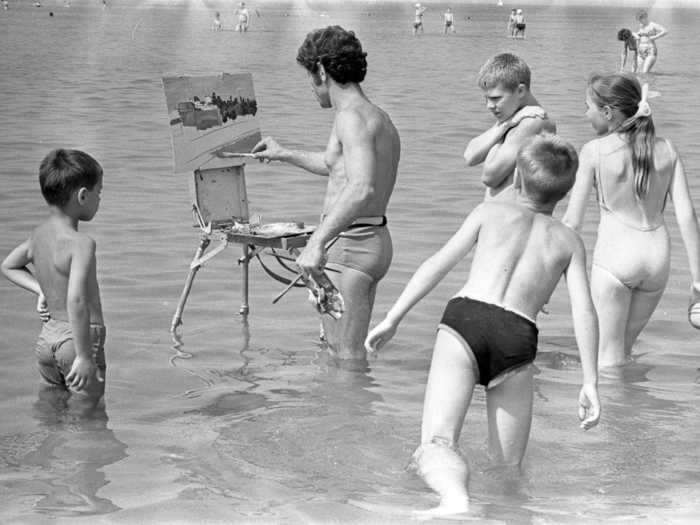Children admire a painting on a sunny beach day in Russia.Vladimir Bogdanov/FotoSoyuz/Getty Images
- Before the end of the Cold War, the Iron Curtain sealed off the Soviet Union from the rest of Europe.
- Life in the Soviet Union was restricted, but as its leaders changed, rules became more relaxed and western influence began to reach its residents.
- Young people became fascinated with American culture, while older generations held on to the communist structure and devotion to the state.
The Iron Curtain was a figurative and ideological wall — and eventually a physical one — that separated the Soviet Union from western Europe after World War II. The name, widely attributed to Winston Churchill, hinted that life in the USSR was secretive and very different from other western, capitalist countries.
But vintage photos provide a peek behind the curtain and show that, while members of the Soviet Union worked tirelessly to prove its power to the rest of the world, there was also time for music, shopping, and vacations in the sun.
Here's what life was like behind the Iron Curtain.
The Iron Curtain was a figurative and political barrier that divided Europe in two.
Gorky Street in Moscow.
Sovfoto/Universal Images Group/Getty Images
It sealed off the Soviet Union from western countries between the end of World War II until the end of the Cold War in 1991.
The Soviet Union was believed to be brutally restrictive, but after Stalin died in 1953, life became a bit more relaxed.
Colleagues congratulate the best seamstress of the sewing shop.
TASS/Getty Images
In 1961, the Berlin Wall was built, and a combination of curiosity and fascination with American culture began to build throughout the '60s, '70s, and '80s.
A couple out dancing.
Harold Hauswald
Some of this fascination was fueled by the US State Department, which sent popular American music to Eastern Europe.
A jazz band of college students inspired by American jazz.
Sovfoto/Universal Images Group/Getty Images
The music sparked interest within the communist bloc, and young people began to idolize American culture.
Source: PressBooks
Music like jazz gave people a chance to experiment with a new version of entertainment that they were otherwise unfamiliar with.
Young men play jazz on the street.
LUBOMIR KOTEK/AFP/Getty Images
But Soviet leaders continued to ban rock and roll music.
Punks rocking out in St. Petersburg.
Joanna Stingray/Getty Images
"Style hunters" were basically the Soviet version of today's hipsters. They would listen to smuggled music and dance in hidden discotheques before the police busted them.
A group of style hunters rocking the wildest outfits they can come up with.
Marc DEVILLE/Gamma-Rapho/Getty Images
Fascination with punk style took the youth by storm.
This group of punks is probably everything the Soviet leaders feared.
Peter Turnley/Corbis/VCG/Getty Images
Punks would do anything to get their hands on even just a few seconds of rock and roll.
In the 1950s, "bone records" were old X-rays printed on flimsy vinyl sheets that were used to share American rock music. The sound quality was awful, but it provided the taste of rebellion they were after.
A punk messes around in 1987.
Marc DEVILLE/Gamma-Rapho/Getty Images
Sports, and particularly soccer, were popular in the Soviet Union. When the soccer team won the European Championship in 1960, there were huge celebrations.
Fans jump a fence and rush the field after a soccer match.
Harald Hauswald
In the earlier years of the Soviet Union, Stalin's leadership had organized teams as a way for the state to maintain control.
A soccer team in Moscow, Russia in 1960
Photo by V. Sychev/TASS/Getty Images
While the government was no longer in complete control by the 1960s, they still used victories as a propaganda tool and claimed success whenever there was a big win.
Source: livemint, futbolgrad
For the rebellious youth, sporting events became another excuse to drink and be disruptive.
A man slumps under a tree following a soccer match, while the others in attendance leave the area.
Harald Hauswald
But as younger citizens stirred up trouble, the older generation continued to represent Soviet culture and abide by the communist lifestyle.
Three men riding public transit appear dreary from a long day on the job.
Harald Hauswald
Public transport was a crucial tool to keep the republics connected. The Moscow Metro system was known to be the best kept to flaunt socialist success.
The Moscow Metro pulling into the station.
Vitaly Sozinov/TASS/Getty Images
But public buses were the predominant means of transportation.
A bus pulls around Central Square.
Mark Redkin/FotoSoyuz/Getty Images
On a normal day, adults would head off to work and occasionally browse a store.
Men and women head off to work on a sunny day.
Sovfoto/Universal Images Group/Getty Images
Photographer David Hlynsky told Fast Company that "very few products were branded with anything like the legendary trademarks of the West."
A group of women admire a display of plain clothing in Moscow, 1977.
Gilbert UZAN/Gamma-Rapho/Getty Images
"Rather," he said, "these were generic products devoid of any accompanying mythology."
Source: Fast Company
Nikita Khrushchev, a former Soviet statesman, visited the US in the 1960s and tried to bring the concept of the western supermarket to the Soviet Union — but it didn't catch on.
A group of people stock up on their fruits and vegetables.
Illustré/RDB/ullstein bild/Getty Images
The production and distribution systems just couldn't keep up, and most Soviet citizens continued to shop at small mom-and-pop stores.
Source: Geohistory
Winter in Eastern Europe is known for its extremely cold temperatures, making daily commutes and grocery runs even harder.
A woman stands bundled up in central Moscow.
Simon Knott/Getty Images
But the winter weather didn't stop military parades.
Tanks roll past a huge Lenin portrait in front of the Red Square on November 7, 1977.
Bettmann/Getty Images
Every November, thousands would gather in below-freezing weather to celebrate the Soviet Union's anniversary in front of the Red Square.
Missiles were displayed to show the Soviet Union's military power and capabilities.
Crowds cheer alongside the parade as military tanks roll by on November 7, 1977.
TASS/Getty Images
After all that work, the summertime sunshine was the one thing that truly united everyone.
Children admire a painting on a sunny beach day in Russia.
Vladimir Bogdanov/FotoSoyuz/Getty Images

